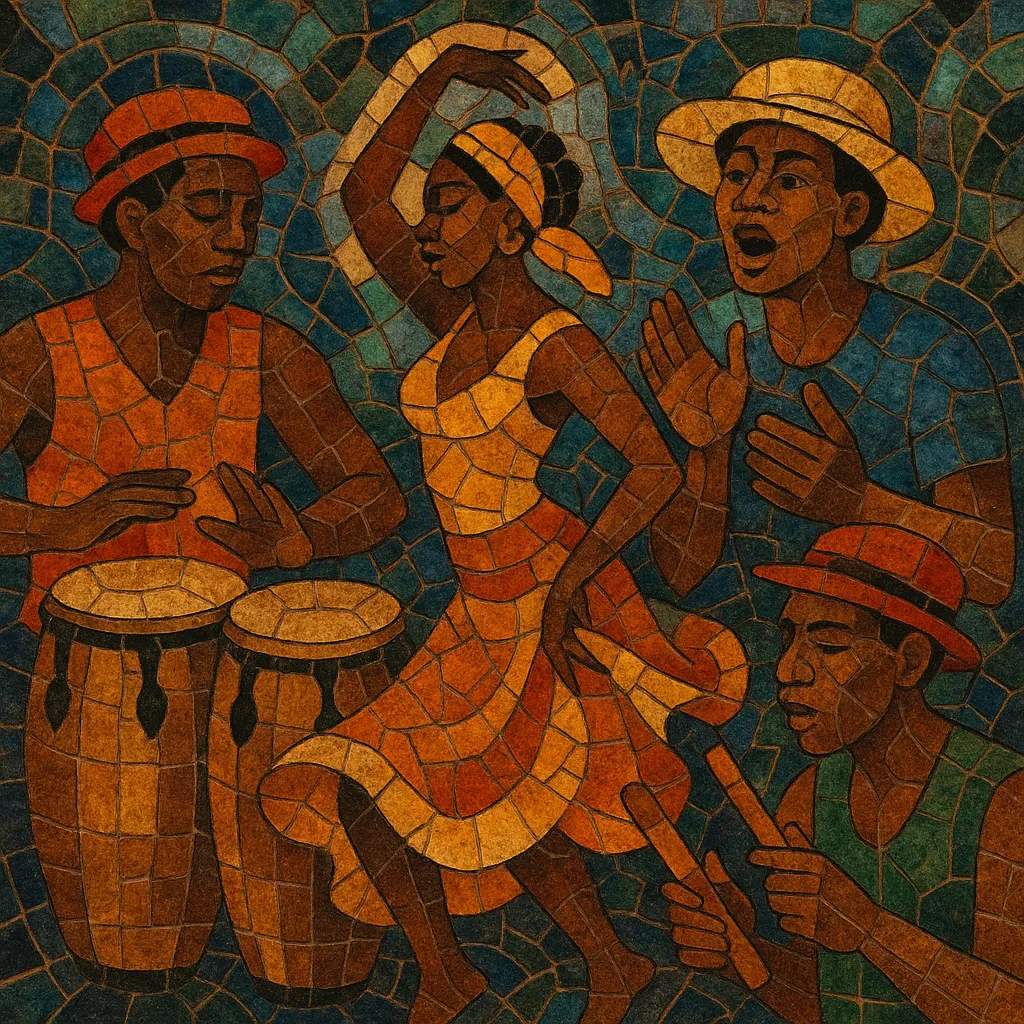Rumba is an Afro‑Cuban, percussion‑driven song‑and‑dance genre that arose in the port neighborhoods and solares of Havana and Matanzas. It features complex interlocking rhythms played on congas (tumbadora, segundo, quinto), claves, and palitos, with the quinto drum improvising over cyclical patterns.
The music is built around the rumba clave (in 3‑2 or 2‑3 orientation), call‑and‑response vocals, and a lead singer who declaims verses followed by catchy coros. Three principal styles exist: yambú (slow, playful), guaguancó (medium, flirtatious, with the iconic "vacunao" gesture in the dance), and columbia (fast, virtuosic, traditionally for solo male dancers).
Historically performed with cajones (wooden boxes) when drums were restricted, rumba is a secular, community practice whose poetry, dance, and rhythm encode Afro‑Cuban history and identity. It is distinct from ballroom "rhumba" and from Congolese rumba, both of which were influenced by Cuban music rather than being the same style.
Rumba emerged in the 1880s among Afro‑Cuban communities of Havana and Matanzas, drawing on West and Central African musical practices (especially Yoruba and other Bantu‑Kongo traditions) and Iberian songpoetry. In dockyards and courtyards (solares), workers created percussive ensembles using cajones (shipping crates), claves, palitos, and later congas. The genre coalesced around the rumba clave, responsorial singing, and dance rituals that mirrored social play, courtship, and competitive display.
By the early 20th century, three primary forms were recognized: yambú (the "old folks’ rumba," slower and elegant), guaguancó (the most widespread couple dance featuring the playful, protective "vacunao"), and columbia (a fast, 6/8‑inflected solo dance emphasizing agility and machete‑like gestures). Ensembles standardized the three‑drum hierarchy (tumba/salidor, segundo/tres‑dos, quinto) and vocal structures (soloist with coro refrains).
From the 1940s onward, rumba repertory entered radio and records, while stage groups helped codify performance practices. After 1959, the Grupo Folklórico Nacional de Cuba (founded 1962) and premier conjuntos such as Los Muñequitos de Matanzas and Clave y Guaguancó elevated rumba in theatres and on international tours, defining canonical arrangements and pedagogy while maintaining community roots.
Cuban rumba’s rhythms, clave concept, and call‑and‑response aesthetics deeply informed salsa, timba, and Afro‑Cuban/Latin jazz. Abroad, musicians adapted rumba into related genres (e.g., Congolese rumba, flamenco rumba/catalana). In 2016, Cuban rumba was inscribed by UNESCO as Intangible Cultural Heritage, reflecting its enduring vitality in street rumbas (rumbas de cajón), neighborhood peñas, and professional ensembles worldwide.


